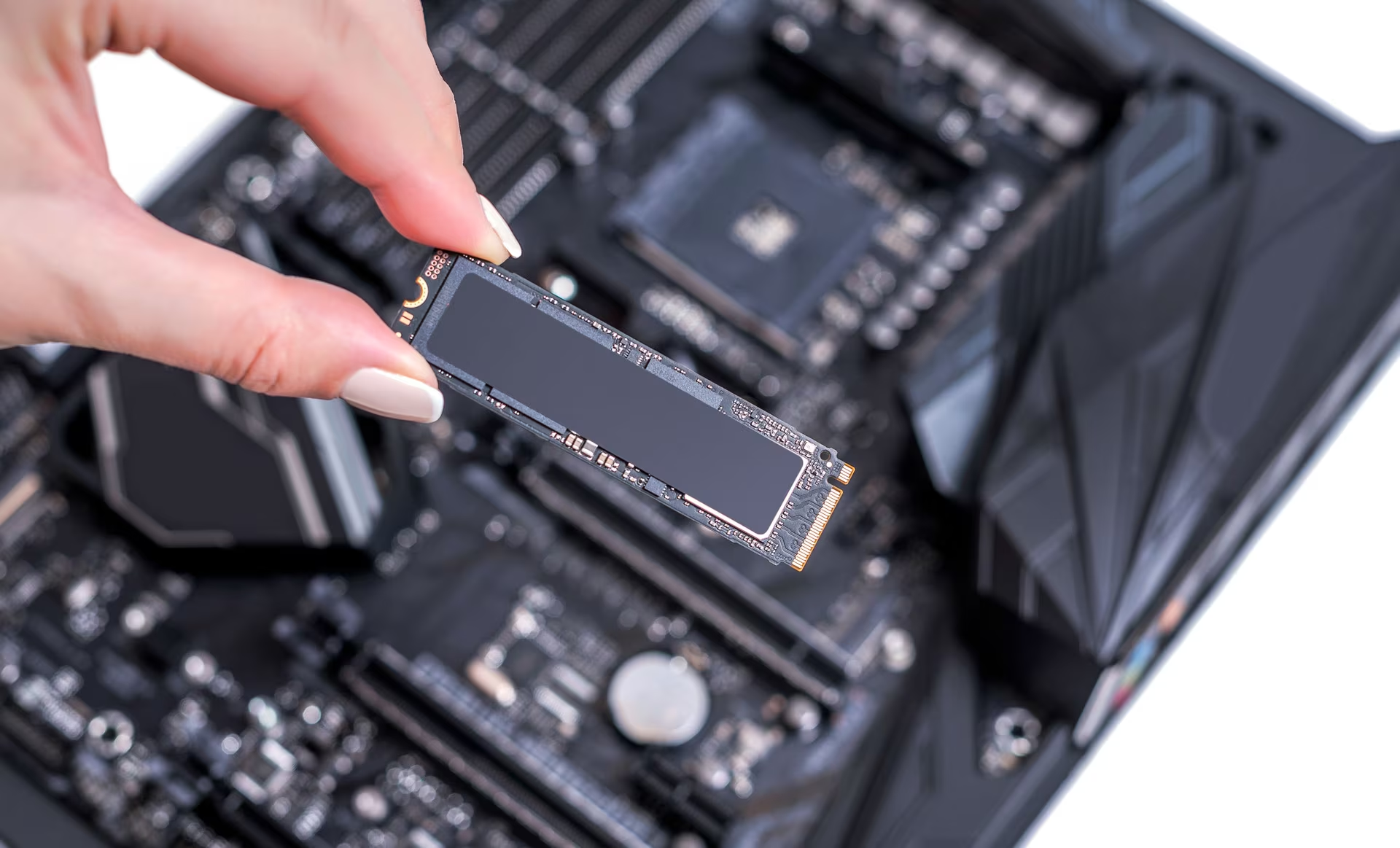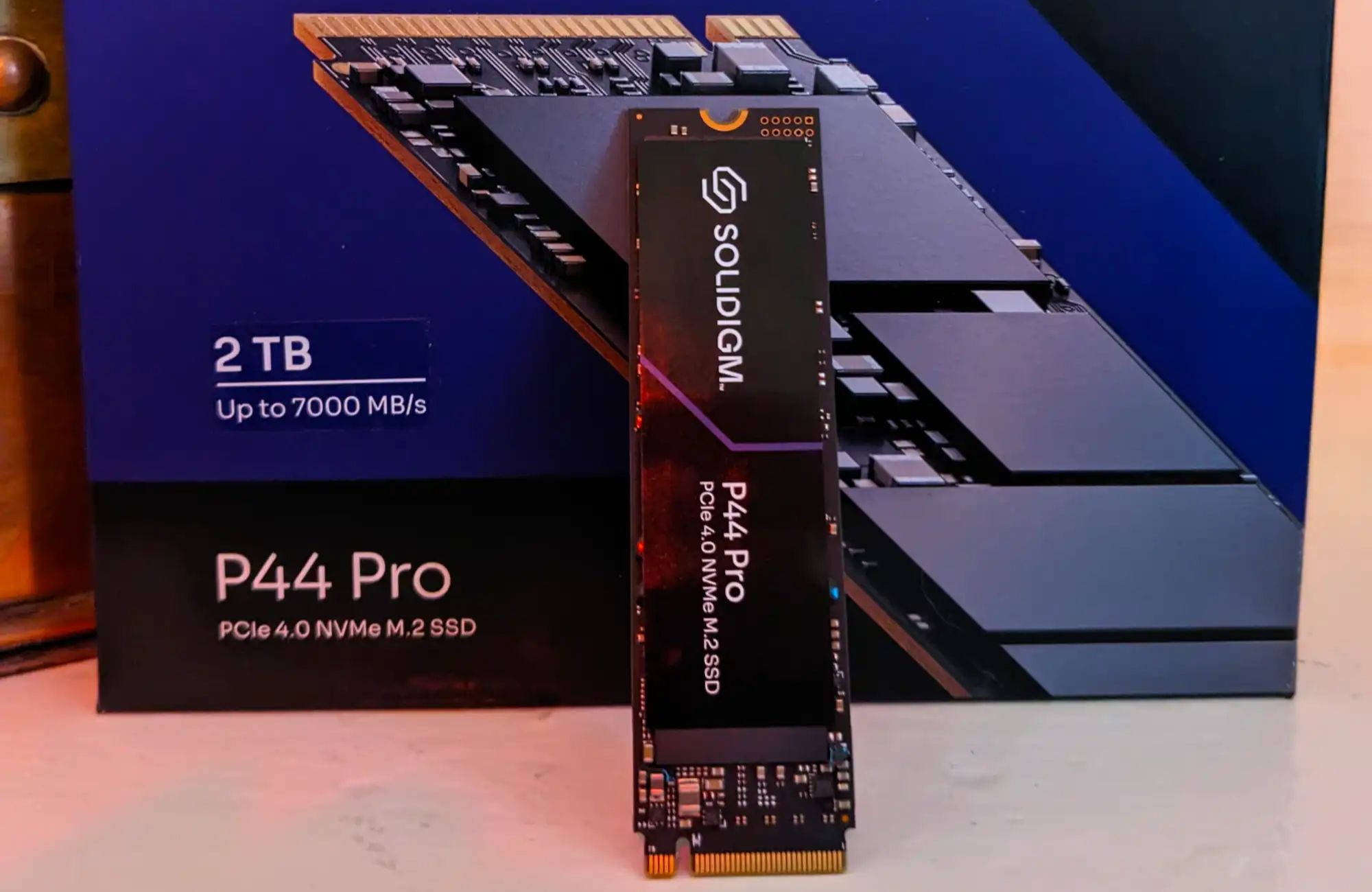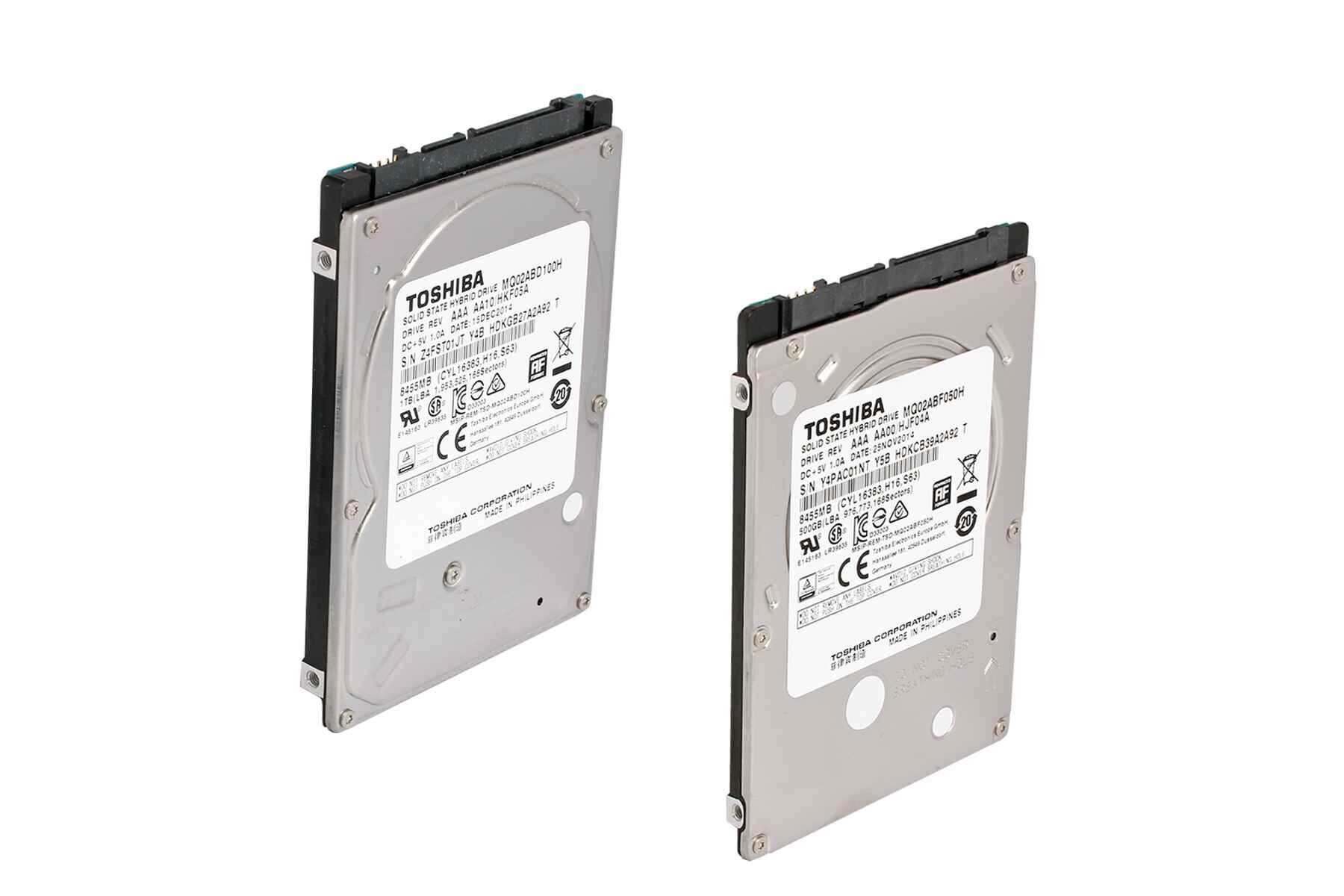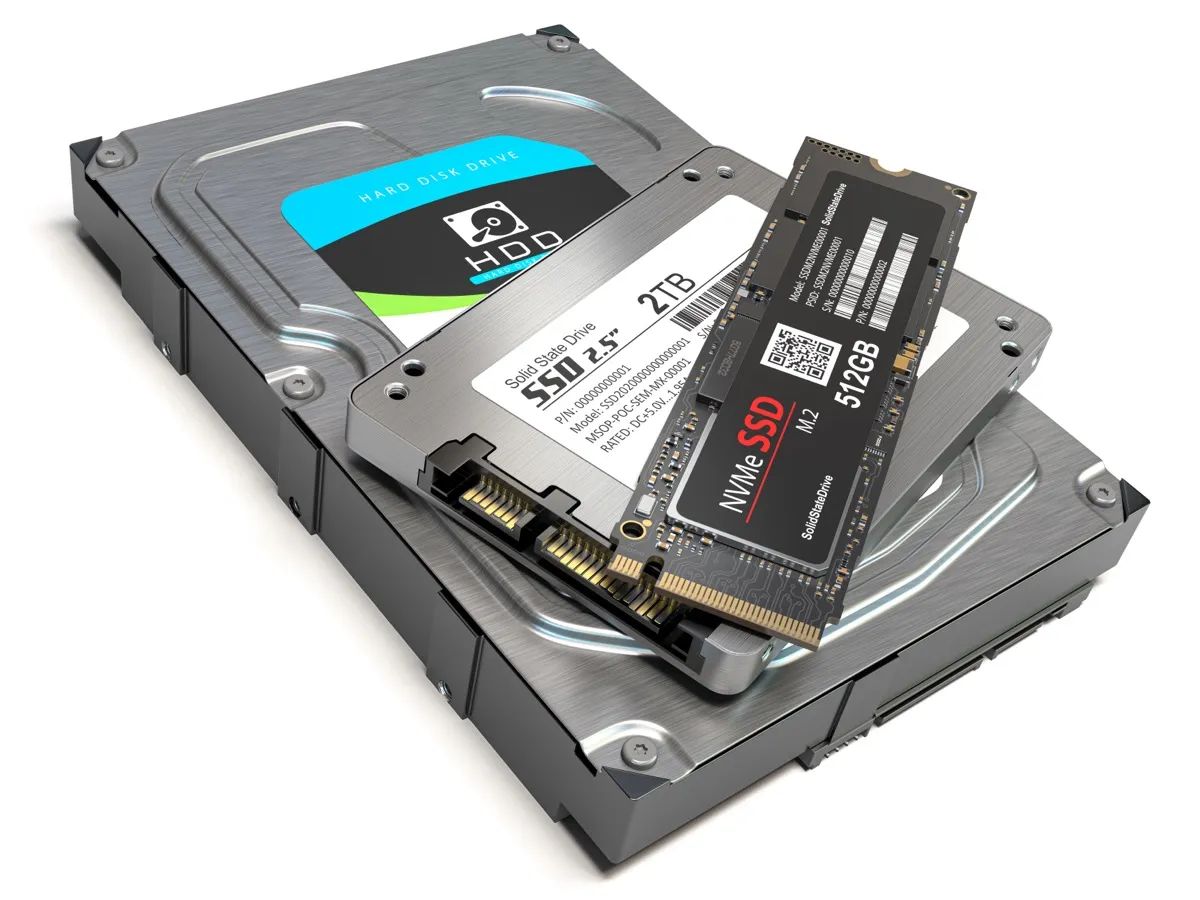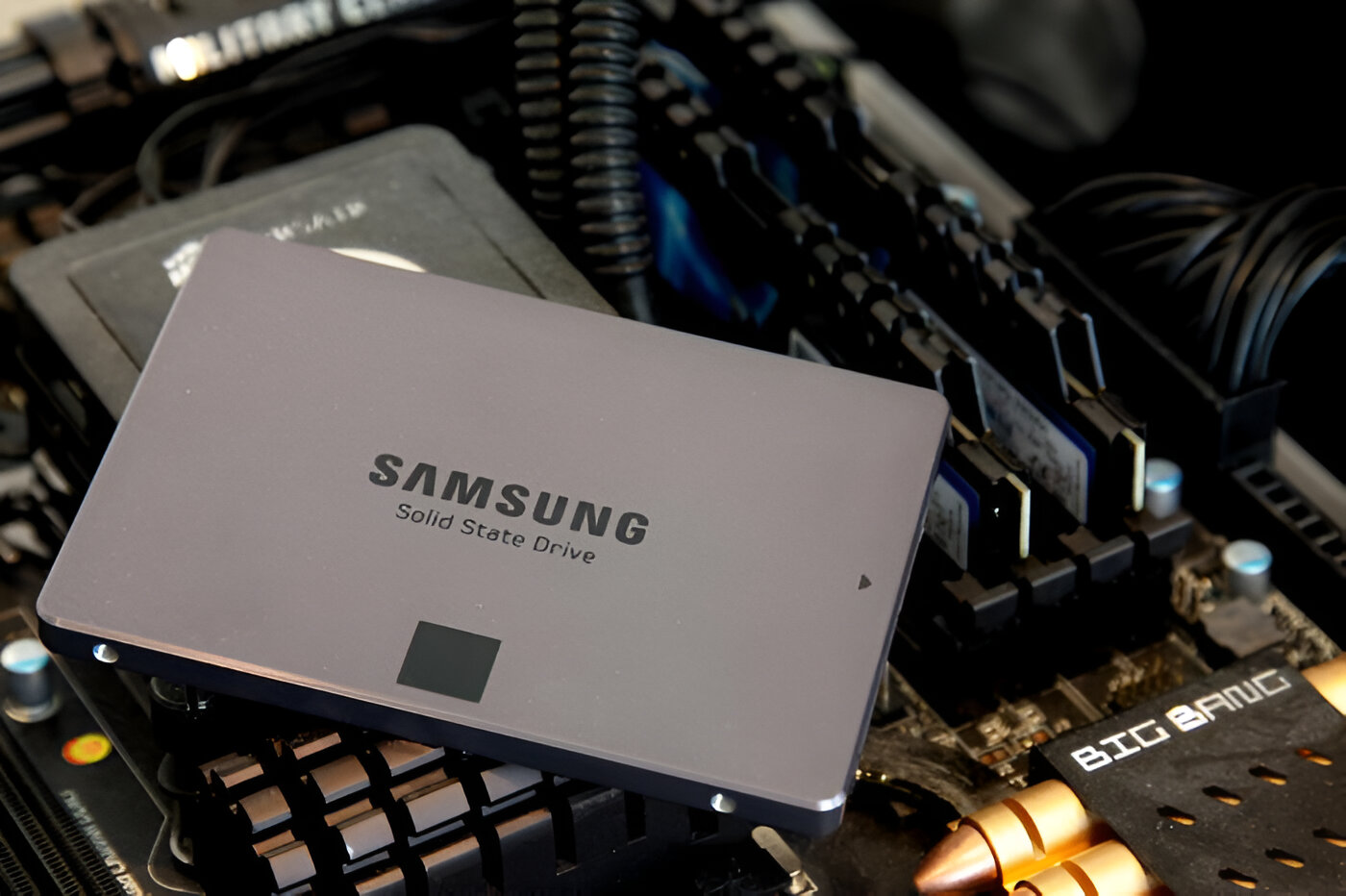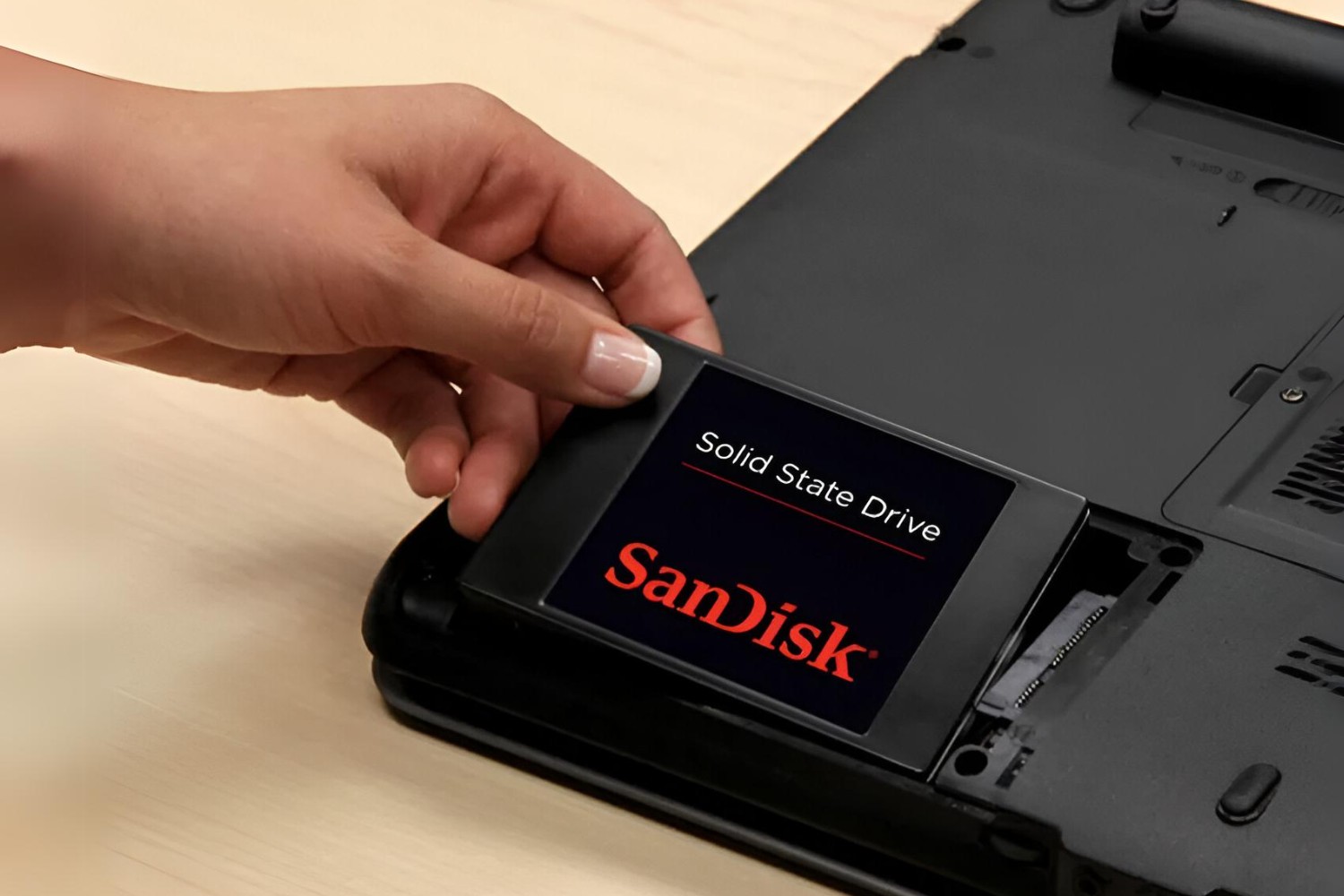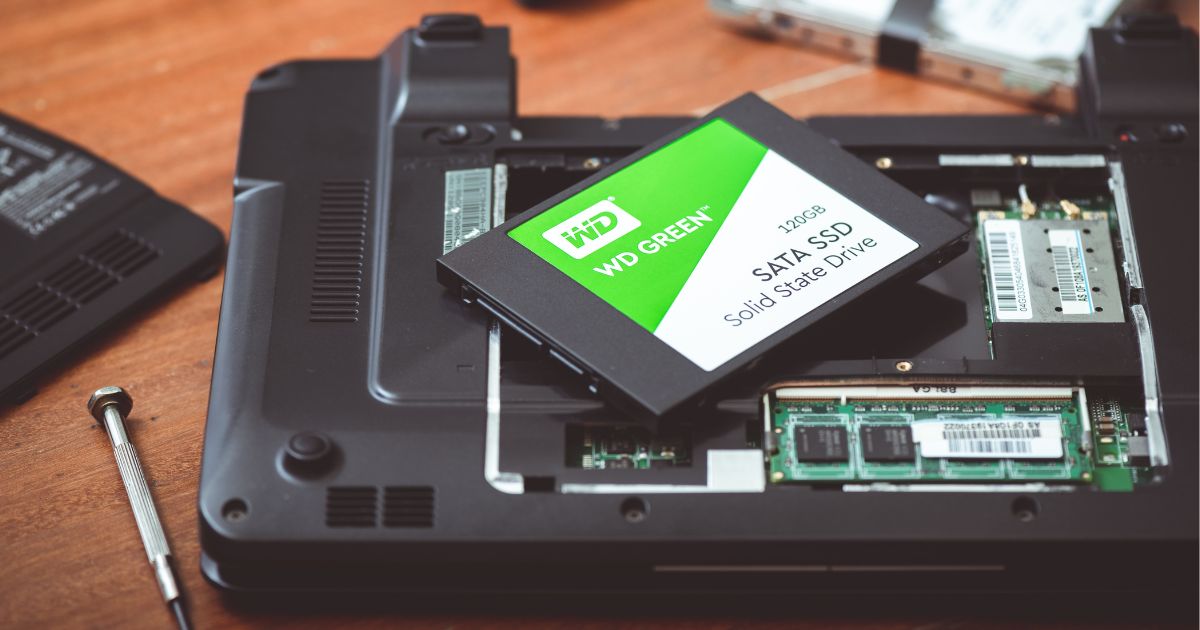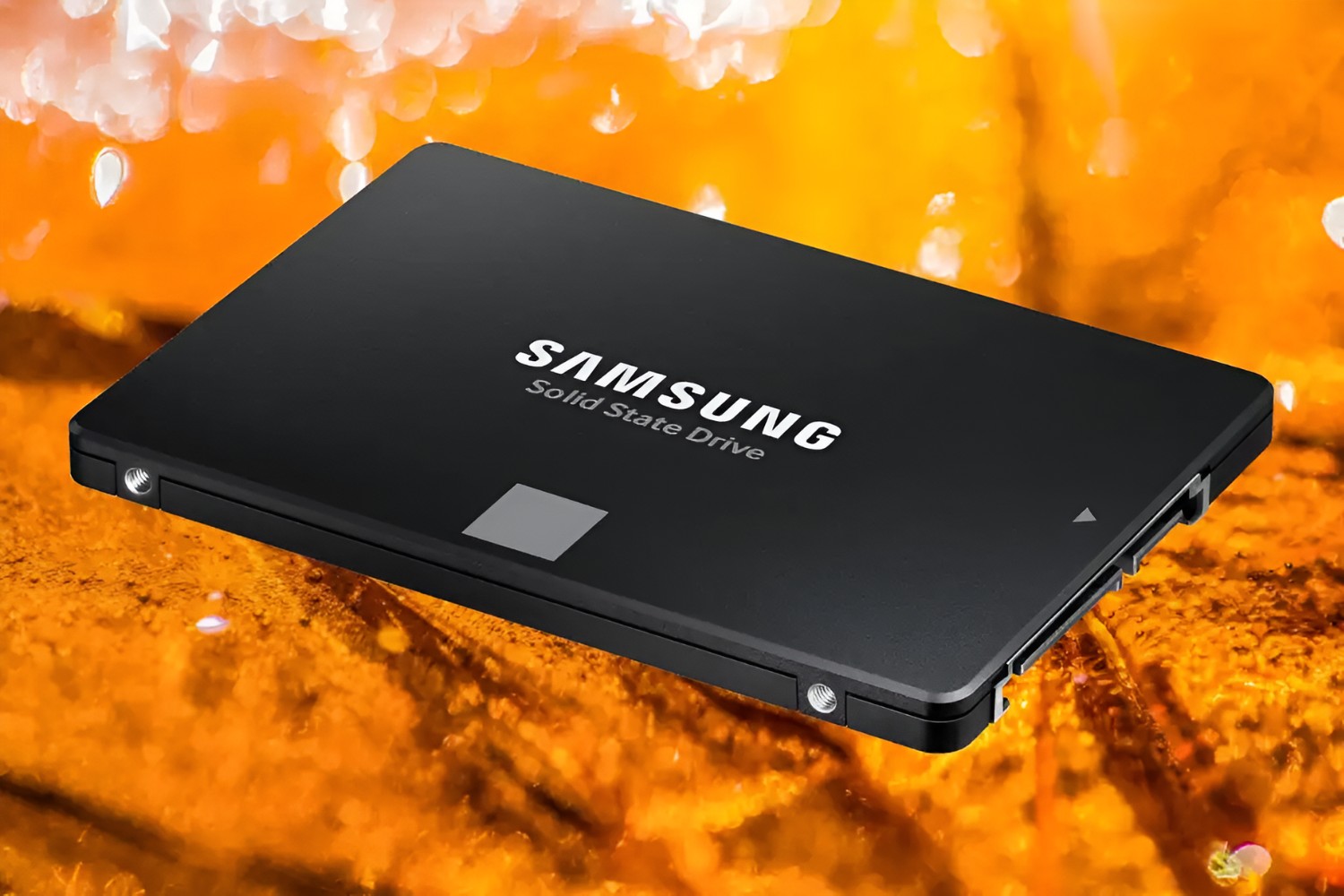Introduction
Welcome to the world of computer storage and get ready to explore the wonders of a Solid State Drive (SSD). If you have ever wondered what a Solid State Drive is and what it does in a computer, you’re in the right place. In this article, we will dive into the details of SSDs, their functionality, and the advantages they offer over traditional Hard Disk Drives (HDDs).
In today’s fast-paced technological era, computer users are constantly seeking ways to improve their system’s speed, performance, and reliability. This is where the Solid State Drive comes into play. Unlike conventional HDDs, which rely on spinning platters and mechanical read/write heads, SSDs provide a newer, more efficient storage solution.
Before we delve into the intricacies of SSDs, let’s understand the basic premise. In simple terms, a Solid State Drive is a type of storage device that uses integrated circuit assemblies to store data persistently. By utilizing flash memory technology, SSDs offer a range of advantages over traditional HDDs, making them an increasingly popular choice for users seeking optimal performance and faster data access.
In the subsequent sections, we will explore how SSDs work, highlight their advantages, and discuss the differences between SSDs and HDDs. We will also address cost considerations and compatibility, as well as provide recommendations for choosing an SSD that meets your specific requirements.
So, whether you’re a tech-savvy enthusiast or simply looking to upgrade your computer’s storage, join us as we unravel the world of Solid State Drives and discover the remarkable benefits they bring to the table.
What Is a Solid State Drive?
A Solid State Drive, commonly known as an SSD, is a type of storage device used in computers and electronic devices. Unlike traditional Hard Disk Drives (HDDs) that rely on spinning platters and mechanical read/write heads, SSDs store data using flash memory technology. This means that SSDs have no moving parts, making them more stable, reliable, and faster compared to HDDs.
The primary purpose of an SSD is to store and retrieve digital information in a computer system. Just like a HDD, an SSD provides a place to store operating systems, software applications, digital media, and user files. However, the key difference lies in the way data is stored and accessed.
Inside an SSD, you will find numerous flash memory chips, which are non-volatile and retain data even without power. The data is stored in memory cells that can be electrically charged to represent a digital bit, either a 0 or a 1. When you save a file or install a program, the data is distributed across these memory cells.
When you need to access the data stored on an SSD, the process is much faster compared to a HDD. This is because there is no need to physically move any read/write heads or wait for spinning platters to align. Instead, the data is retrieved from the memory cells directly, resulting in significantly reduced access times.
Furthermore, SSDs typically come in a form factor similar to traditional HDDs, making them compatible with existing systems. They can be installed internally in laptops and desktop computers, or externally using USB or Thunderbolt connections.
Overall, the solid state drive revolutionized the world of computer storage by providing faster access times, improved performance, and increased durability compared to traditional hard drives. As technology continues to advance, the adoption of SSDs is becoming more prevalent, and they are becoming the preferred choice for those looking to enhance their system’s speed and reliability.
How Does a Solid State Drive Work?
To understand how a Solid State Drive (SSD) works, it’s important to grasp the basics of flash memory technology. Unlike traditional Hard Disk Drives (HDDs), which use mechanical components to read and write data, SSDs rely on electronic processes to store and retrieve information.
Inside an SSD, you’ll find memory cells made of floating gate transistors. These transistors can be electrically charged to represent a digital bit. When a cell is charged, it represents a binary value of 1, and when it is not charged, it represents a value of 0. These charges remain in the cells even when the power is turned off, making the data stored on an SSD non-volatile.
When data needs to be written to an SSD, the controller sends an electrical charge to specific memory cells based on the binary values. This process is known as programming or writing. The controller manages the voltage applied to the cells, ensuring the proper writing and erasing of data.
When data needs to be read from an SSD, the controller accesses the memory cells and reads the electrical charges stored within. The controller interprets these charges and converts them back into the original data. This process is faster than the mechanical process involved in reading data from an HDD, making SSDs significantly faster and more responsive.
A key aspect of the SSD’s functionality is wear leveling. Wear leveling is a technique used to distribute data evenly across the memory cells to ensure equal usage and prevent premature wear. By spreading out the data storage, wear leveling helps prolong the lifespan and durability of the SSD.
Another important component of an SSD is the cache. The cache acts as temporary storage for frequently accessed data, allowing for faster read and write operations. The cache size varies depending on the SSD model, and larger caches generally improve performance.
Overall, the solid state drive works by utilizing flash memory technology to store and retrieve digital information. The absence of moving parts and the reliance on electronic processes make SSDs faster, more reliable, and more energy-efficient than HDDs. As technology continues to advance, we can expect even more advancements in SSD performance and capacity, further solidifying their role as the future of computer storage.
Advantages of Using a Solid State Drive
Using a Solid State Drive (SSD) as your primary storage solution offers several advantages over traditional Hard Disk Drives (HDDs). These advantages make SSDs a popular choice for users seeking improved performance, reliability, and energy efficiency. Let’s explore some of the key benefits of using an SSD:
1. Increased Speed and Performance: SSDs are significantly faster than HDDs when it comes to data access and transfer speeds. With no moving parts involved, SSDs can retrieve data almost instantly, resulting in faster boot times, quicker application launches, and reduced file transfer times. This increased speed enhances overall system performance and responsiveness, allowing for a smoother computing experience.
2. Greater Reliability and Durability: Unlike HDDs, which are susceptible to physical damage due to moving parts, SSDs are built using solid-state technology. This design makes SSDs more resistant to shock, impact, and vibrations, reducing the risk of data loss caused by accidental drops or mishandling. Additionally, SSDs are less prone to mechanical failures, such as disk crashes or read/write head malfunctions, ensuring greater reliability and data integrity.
3. Energy Efficiency: SSDs consume less power than HDDs, making them more energy-efficient. Since SSDs have no spinning platters or moving parts, they require less electricity to operate, resulting in reduced power consumption and extended battery life in laptops and portable devices. This energy efficiency not only helps save on electricity costs but also contributes to a greener and more sustainable computing environment.
4. Noise Reduction: The absence of mechanical components in SSDs eliminates the noise generated by HDDs, which can be bothersome in quiet environments. SSDs operate silently, allowing for a noise-free computing experience.
5. No Moving Parts: As mentioned earlier, SSDs have no moving parts, which means there are no platters to spin or read/write heads to position. This lack of moving parts results in less wear and tear over time, reducing the chances of mechanical failure and increasing the overall lifespan of the drive.
Overall, the advantages of using SSDs contribute to a more efficient and reliable computing experience. The increased speed, improved durability, energy efficiency, noise reduction, and absence of moving parts make SSDs an excellent choice for anyone seeking a performance boost and enhanced system reliability.
Increased Speed and Performance
One of the major advantages of using a Solid State Drive (SSD) is the significantly increased speed and performance it offers compared to traditional Hard Disk Drives (HDDs). SSDs are designed to provide faster data access and transfer rates, revolutionizing the way we interact with our computers. Here are some key aspects that contribute to the increased speed and performance of SSDs:
1. Faster Boot Times: One of the noticeable improvements when using an SSD is the reduced boot time of your computer. SSDs can start up your operating system and load essential programs in a matter of seconds, eliminating the frustrating wait times associated with HDDs. This speed enhancement allows you to get right into your work or leisure activities without wasting valuable time.
2. Quick Application Launches: SSDs excel in launching applications swiftly. Whether it’s opening your favorite photo editing software, launching a resource-intensive video game, or starting a complex productivity suite, SSDs drastically reduce the time it takes to load these applications. This means you can jump right into your tasks and enjoy a seamless and responsive user experience.
3. Reduced File Transfer Times: SSDs excel in transferring data, allowing you to copy, paste, and transfer files at lightning-fast speeds. Whether you’re working with large multimedia files, transferring documents, or performing backups, SSDs can handle these tasks much faster compared to HDDs. This increased speed not only saves time but also improves productivity, especially for users dealing with large volumes of data on a daily basis.
4. Quicker System Response: SSDs greatly improve the overall system responsiveness. Tasks such as opening multiple programs simultaneously, switching between applications, and performing file searches are executed seamlessly and without any noticeable lag. This allows you to work efficiently and multitask effortlessly, enhancing your productivity and overall computing experience.
5. Improved Gaming Performance: For gaming enthusiasts, SSDs offer a tremendous advantage. The faster data access and transfer speeds allow games to load much quicker, reducing loading times and in-game stuttering. Additionally, SSDs provide faster texture streaming, allowing for smoother gameplay, faster level loading, and reduced loading screens. This allows gamers to immerse themselves fully in the gaming experience without any performance limitations.
Overall, the increased speed and performance provided by SSDs is a game-changer in the world of computing. From faster boot times and quick application launches to reduced file transfer times and improved gaming performance, SSDs elevate your computer experience to a whole new level. So, if you’re looking to enhance the speed and responsiveness of your computer, investing in an SSD is undoubtedly a great decision.
Greater Reliability and Durability
When it comes to reliability and durability, Solid State Drives (SSDs) have a clear advantage over traditional Hard Disk Drives (HDDs). The absence of moving parts and the use of solid-state technology make SSDs more robust and less prone to failure. Let’s explore the reasons why SSDs are known for their greater reliability and durability:
1. Resistance to Physical Damage: SSDs are constructed without any spinning platters or fragile read/write heads, making them highly resistant to physical damage. Unlike HDDs, which are vulnerable to shock, vibration, and accidental drops, SSDs can withstand these external forces much better. This durability ensures that your data remains safe, even in situations where the drive experiences physical stress.
2. Reduced Risk of Mechanical Failure: Since SSDs do not rely on mechanical components, they are free from the common failures associated with HDDs. HDDs have mechanical parts that can fail due to wear and tear, such as disk crashes, read/write head malfunction, or motor failure. In contrast, SSDs use electronic processes to store and retrieve data, eliminating these mechanical failure points and increasing overall reliability.
3. Protection against File Fragmentation: File fragmentation occurs when data is scattered across multiple physical locations on a hard drive, leading to slower access times. Traditional HDDs are more susceptible to fragmentation over time, which can impact overall performance. SSDs, on the other hand, do not experience the same file fragmentation issues, resulting in consistent and reliable performance throughout their lifetime.
4. Enhanced Resistance to Temperature and Humidity: SSDs are designed to endure a wide range of operating temperatures and humidity levels. This makes them suitable for use in a variety of environments, from extreme heat to frigid cold. Unlike HDDs, which may suffer from thermal expansion and contraction, leading to potential performance degradation or failure, SSDs remain stable and reliable under varying temperature conditions. Additionally, SSDs are not susceptible to humidity-related issues, such as corrosion or moisture damage.
5. Extended Lifespan: Due to their solid-state construction, SSDs generally have a longer lifespan compared to HDDs. Wear leveling algorithms distribute data evenly across the memory cells on an SSD, ensuring that cells are used evenly and preventing premature wear. This feature contributes to the longevity of the drive, allowing it to maintain consistent performance and reliability over a longer period of time.
Overall, the greater reliability and durability of SSDs offer peace of mind, knowing that your data is safe and your system can operate smoothly. With SSDs, you can enjoy a more robust storage solution, free from the concerns typically associated with traditional HDDs. Whether you’re a professional requiring a dependable drive for critical data or a casual user seeking a hassle-free computing experience, SSDs are a reliable choice.
Energy Efficiency
Energy efficiency is a significant advantage that Solid State Drives (SSDs) offer over traditional Hard Disk Drives (HDDs). The design and technology used in SSDs result in lower power consumption, making them a more environmentally friendly and cost-effective storage solution. Let’s explore the energy-efficient features of SSDs in more detail:
1. Reduced Power Consumption: SSDs consume less power compared to HDDs because they lack the need for mechanical components, such as spinning platters and moving read/write heads. These mechanical parts in conventional HDDs require more energy to operate, resulting in higher power consumption. On the other hand, SSDs rely on non-volatile memory chips and electronic processes, which have significantly lower power requirements. This reduced power consumption not only helps reduce electricity costs, but also contributes to a greener computing environment by conserving energy resources.
2. Extended Battery Life: In laptops, notebooks, and other portable devices, SSDs play a crucial role in extending battery life. With their low power consumption, SSDs minimize the drain on the device’s battery, allowing for longer usage without the need for frequent recharging. This is especially beneficial for users who rely on their laptops for extended periods of time, such as professionals on the go or students in classrooms or libraries. By choosing an SSD, users can enjoy increased productivity and uninterrupted usage, all while maximizing battery life.
3. Heat Reduction: SSDs generate less heat compared to HDDs because they do not have moving parts that create friction and require cooling mechanisms. HDDs, due to their rotational components, often produce heat during operation, necessitating additional cooling systems to maintain optimal temperatures. In contrast, SSDs’ solid-state design and efficient operations result in minimal heat generation. This not only reduces the need for elaborate cooling solutions but also contributes to a quieter and more pleasant computing experience.
4. Silent Operation: SSDs operate silently due to the absence of mechanical components. This is a stark contrast to HDDs, which emit noise caused by spinning platters and moving read/write heads. The silent operation of SSDs enhances the overall user experience, particularly in noise-sensitive environments such as recording studios, libraries, or offices. Users can work or enjoy multimedia content without any distracting or annoying background noise.
5. Environmentally Friendly: By consuming less power and producing less heat, SSDs have a lower carbon footprint, making them more environmentally friendly compared to HDDs. The reduced energy consumption helps conserve natural resources and reduces greenhouse gas emissions. Moreover, SSDs do not contain hazardous materials such as lead or mercury, further contributing to a cleaner and safer environment.
Overall, the energy efficiency of SSDs not only ensures cost savings and longer battery life but also has positive environmental implications. By transitioning to SSDs, users can reduce their ecological footprint while enjoying the benefits of faster performance and increased reliability.
Noise Reduction
One of the advantages of using a Solid State Drive (SSD) in your computer system is the reduction in noise compared to traditional Hard Disk Drives (HDDs). The absence of mechanical parts in SSDs eliminates the sound generated by spinning platters and moving read/write heads, resulting in a quieter computing experience. Let’s explore the noise reduction benefits of SSDs in more detail:
1. Silent Operation: SSDs operate silently because they do not rely on mechanical components. Unlike HDDs, which emit noise due to the rotation of the platters and the movement of the read/write heads, SSDs operate quietly. This silence allows users to focus on their work, enjoy multimedia, or engage in other activities without intrusive background noise.
2. Noise-Free Recording and Audio Production: For professionals working in audio recording and production, SSDs are a preferred choice. The absence of mechanical noise in SSDs eliminates the possibility of background noise interfering with the recording or production process. This is especially crucial for capturing highly sensitive sounds or creating high-quality audio content where even the slightest noise can be detrimental to the final product.
3. Noise Reduction in Home Theater Systems: When SSDs are used in media centers or home theater systems, the noise reduction is particularly noticeable. HDDs can emit audible vibrations and noise, which can detract from the immersive experience of watching movies or enjoying music. SSDs eliminate these distractions, allowing users to fully immerse themselves in their favorite entertainment without any undesirable background noise.
4. Improved Concentration in Quiet Environments: In quiet environments such as libraries, offices, or study spaces, the noise reduction provided by SSDs is valuable. HDDs can produce noticeable noise levels, which can be distracting or disruptive, especially when working on tasks that require concentration. The silent operation of SSDs helps users maintain focus and productivity without the added distraction of mechanical noise.
5. Enhanced User Experience: The absence of noise in SSDs contributes to an overall more pleasant user experience. Users can enjoy a quiet computing environment without the constant hum or vibration associated with HDDs. Whether it’s working on important tasks, engaging in creative endeavors, or simply browsing the internet, SSDs offer a more peaceful and enjoyable computing experience.
Overall, the noise reduction provided by SSDs enhances the user experience by creating a quieter computing environment. Whether you are a professional needing noise-free recordings, an audiophile seeking high-quality audio, or someone looking to work or relax in a peaceful setting, SSDs provide the solution by eliminating the mechanical noise associated with traditional HDDs.
No Moving Parts
An important advantage of Solid State Drives (SSDs) is that they have no moving parts, in contrast to traditional Hard Disk Drives (HDDs) that rely on mechanical components. This absence of moving parts in SSDs offers several benefits, making them more reliable, durable, and efficient. Let’s take a closer look at the advantages of SSDs having no moving parts:
1. Increased Reliability: The absence of moving parts in SSDs means there is no risk of mechanical failure due to component wear and tear. HDDs, with their spinning platters and moving read/write heads, are susceptible to failures such as head crashes, motor malfunctions, or disk degradation. SSDs, on the other hand, use solid-state technology, which significantly reduces the chance of mechanical failures, ensuring a more reliable storage solution.
2. Improved Durability: Since SSDs have no moving parts, they are inherently more resistant to physical shocks, vibrations, and accidental drops. The lack of mechanical elements that can become misaligned or damaged makes SSDs better equipped to endure rough handling, making them ideal for portable devices like laptops or tablets. This improved durability means your data is better protected, reducing the risk of data loss caused by physical mishaps.
3. Vibration Resistance: HDDs can produce vibrations as a result of their spinning platters and read/write heads in motion. These vibrations can affect neighboring components and, over time, potentially cause performance issues or premature failure. SSDs, however, are immune to such vibrations, as they contain no moving parts. This vibration resistance contributes to the overall stability and longevity of SSDs, ensuring consistent performance throughout their lifespan.
4. Lower Power Consumption: The elimination of moving parts in SSDs results in lower power consumption compared to HDDs. Spinning platters and moving read/write heads in HDDs require energy to operate, whereas SSDs rely on electronic processes that consume much less power. This lower power consumption not only saves energy and reduces electricity costs but also helps increase battery life in portable devices, providing longer usage time on a single charge.
5. Noise Reduction: The absence of mechanical components makes SSDs operate silently. HDDs can produce noise due to the rotation of platters and the movement of read/write heads, which can be noticeable and distracting. The silent operation of SSDs provides a noise-free computing experience, allowing users to focus on their tasks, enjoy multimedia content, or work in noise-sensitive environments without any distractions.
Overall, the absence of moving parts in SSDs brings numerous advantages, including increased reliability, improved durability, resistance to vibrations, lower power consumption, and noise reduction. These advantages make SSDs an ideal choice for users seeking a more efficient, reliable, and silent storage solution for their computing needs.
Differences Between SSDs and Hard Disk Drives (HDDs)
When it comes to storage solutions in computers, there are significant differences between Solid State Drives (SSDs) and Hard Disk Drives (HDDs). These differences affect various aspects, including performance, reliability, energy efficiency, and cost. Let’s explore the distinctions between SSDs and HDDs in more detail:
1. Technology: SSDs store and retrieve data using flash memory technology, which is non-volatile and retains data even without power. In contrast, HDDs use magnetic platters that spin at high speeds and read/write heads that move across the platters to access data. The use of solid-state technology in SSDs eliminates the mechanical operations required by HDDs, resulting in faster data access and increased reliability.
2. Performance: SSDs outperform HDDs in terms of data access speed, transfer rates, and overall responsiveness. Since there are no moving parts involved in SSDs, the time required to access data is significantly reduced, resulting in faster boot times, quicker application launches, and reduced file transfer times. HDDs, while still capable of storing and retrieving data, are slower and often experience latency due to the physical nature of their operations.
3. Reliability: SSDs are generally more reliable than HDDs due to their solid-state construction. HDDs can be prone to mechanical failures, such as disk crashes or read/write head malfunctions, which can result in data loss. SSDs, without any moving parts, are less susceptible to such failures, making them more reliable in terms of data storage and longevity.
4. Durability: SSDs are more durable than HDDs because they have no moving parts. HDDs, with their spinning platters and moving read/write heads, are susceptible to physical shocks, vibrations, and accidental drops, which can lead to data loss or component failure. SSDs, being solid-state, are better equipped to handle rough handling and are more resilient to physical impacts, resulting in increased durability and better protection for your data.
5. Energy Efficiency: SSDs are more energy-efficient than HDDs. Since SSDs do not rely on spinning platters or moving read/write heads, they consume less power. This lower power consumption not only reduces electricity costs but also helps extend battery life in laptops and portable devices, allowing for longer usage without the need for frequent recharging. HDDs, with their mechanical operations, require more power to operate, leading to higher energy consumption.
6. Noise: SSDs operate silently because they have no moving parts. HDDs, on the other hand, produce noise due to the rotation of platters and the movement of read/write heads. The absence of mechanical noise in SSDs provides a quieter computing experience, suitable for noise-sensitive environments or users who prefer a noise-free environment.
7. Cost: While the prices of SSDs have decreased over time, they are generally more expensive than HDDs in terms of price per gigabyte. HDDs offer a cost-effective storage solution with higher storage capacities at a lower cost. However, SSD prices have been continuously dropping, making them more accessible and affordable. The choice between SSDs and HDDs often comes down to a balance between performance requirements and budget constraints.
Overall, SSDs and HDDs differ significantly in terms of technology, performance, reliability, durability, energy efficiency, noise production, and cost. SSDs offer faster speed, increased reliability, better durability, energy efficiency, and a quieter operation, while HDDs provide cost-effective higher storage capacity options. Understanding these differences is crucial in selecting the suitable storage solution that aligns with your specific needs and priorities.
Cost Considerations
When considering the purchase of a Solid State Drive (SSD) or a traditional Hard Disk Drive (HDD), cost plays a significant role in the decision-making process. SSDs offer numerous advantages, but they generally come at a higher price per gigabyte compared to HDDs. Let’s explore the cost considerations when choosing between SSDs and HDDs:
1. Price per Gigabyte: HDDs have a significant advantage in terms of cost per gigabyte of storage. They are generally more affordable, allowing users to obtain larger storage capacities at a lower cost. This makes HDDs a popular choice for users who require large amounts of storage without breaking the bank. SSDs, on the other hand, can be more expensive, especially when seeking higher storage capacities.
2. Performance-to-Cost Ratio: It’s important to consider the performance benefits that SSDs offer when comparing costs. SSDs provide faster data access and transfer speeds, resulting in improved system responsiveness and reduced wait times. While SSDs may come at a higher upfront cost, the enhanced performance can greatly impact productivity and user experience, potentially justifying the higher price for users who require faster storage solutions.
3. Long-Term Cost Savings: SSDs can offer long-term cost savings. Although they have a higher price per gigabyte, SSDs require less power to operate compared to HDDs. The reduced energy consumption translates into lower electricity costs over time. Additionally, SSDs have a longer lifespan and are more durable due to their lack of moving parts. This means lower replacement and maintenance costs in the long run, potentially offsetting the initial higher investment.
4. System Performance and Productivity: The increased speed and responsiveness of SSDs can positively impact overall system performance and user productivity. Faster boot times, quicker application launches, and reduced file transfer times can save valuable time in various tasks and workflows. This improved efficiency can lead to enhanced productivity, making SSDs a worthwhile investment despite their higher cost.
5. Consideration of Storage Needs: It’s crucial to consider your specific storage needs when evaluating costs. If you require large storage capacities for archival purposes or mass data storage, HDDs can provide a cost-effective solution. However, if you prioritize speed, reliability, and durability over raw storage capacity, SSDs may be a more suitable choice, even at a higher cost per gigabyte.
6. Price Trends: It’s worth noting that over time, SSD prices have been steadily decreasing, making them more accessible and affordable. Technological advancements and market competition have contributed to the gradual reduction in SSD prices. This trend makes SSDs a more viable option for budget-conscious users, offering a better balance between performance and cost.
In summary, cost considerations are crucial when choosing between SSDs and HDDs. While HDDs have a lower cost per gigabyte and provide larger storage capacities, SSDs offer faster performance, enhanced reliability, improved durability, and potential long-term cost savings. It’s essential to assess your storage needs, priorities, and budget constraints to make an informed decision that aligns with your specific requirements.
Compatibility with Existing Systems
When considering a storage upgrade to a Solid State Drive (SSD), compatibility with your existing systems is an important factor to consider. SSDs are designed to be compatible with a wide range of devices, including desktop computers, laptops, and external storage solutions. Let’s explore the compatibility considerations when upgrading to an SSD:
1. Interface Compatibility: SSDs are available in different interface types, such as SATA (Serial Advanced Technology Attachment), NVMe (Non-Volatile Memory Express), and PCIe (Peripheral Component Interconnect Express). It’s crucial to ensure that your system’s motherboard or storage interface supports the SSD you plan to install. Most modern systems feature SATA III ports, which are backward compatible with SATA II and SATA I, allowing for seamless SSD integration.
2. Form Factor: SSDs come in various form factors, including 2.5-inch, M.2, and mSATA. The 2.5-inch form factor is similar to traditional laptop HDDs, making it compatible with most laptops and desktop computers that have 2.5-inch drive bays or adapter brackets. M.2 SSDs are slim and designed for use in ultrabooks, tablets, and newer desktop motherboards with corresponding M.2 slots. mSATA SSDs are smaller and primarily compatible with older laptops and mini PCs that have mSATA slots.
3. Capacity and Drive Size: Another compatibility consideration is the capacity and physical size of the SSD. Ensure that the SSD you select offers sufficient storage capacity to meet your needs. Additionally, check the physical dimensions, especially if you are upgrading a laptop or other devices with limited space. SSDs are available in various storage capacities and physical sizes, so it’s important to choose one that fits your system’s specifications.
4. Operating System Support: SSDs are compatible with popular operating systems such as Windows, macOS, and Linux. The operating system should recognize the SSD without any issues and support its features, such as TRIM support for optimizing performance and wear leveling. Ensure that your operating system is up to date and has the necessary drivers and firmware for SSD compatibility.
5. Compatibility with Data and Power Cables: Depending on the type of SSD and your system’s configuration, you may need compatible data and power cables. SATA SSDs typically use standard SATA data cables and power connectors that are compatible with existing systems. However, M.2 SSDs may require specific M.2 sockets or adapters for proper installation. Verify the compatibility of these cables and connectors with your system and SSD type before proceeding with the upgrade.
6. Firmware and BIOS Updates: To ensure optimal compatibility and performance, it’s recommended to keep your system’s firmware and BIOS up to date. Check the manufacturer’s website for any available updates specific to your system and SSD model. These updates often provide improvements, bug fixes, and compatibility enhancements that can enhance the overall compatibility and performance of your SSD.
7. Data Migration and Operating System Installation: When upgrading to an SSD, you may need to migrate your existing data from the old storage device to the new SSD or perform a fresh installation of the operating system. Various migration tools and software are available to simplify this process, ensuring a seamless transition to your new SSD without any compatibility issues.
Overall, SSDs are designed to be compatible with a wide range of systems, and upgrading to an SSD is usually a straightforward process. However, it’s important to ensure compatibility with your existing systems in terms of interface, form factor, capacity, operating system support, cables, and firmware. By considering these compatibility factors, you can confidently upgrade to an SSD and enjoy the performance and reliability benefits it brings to your computing experience.
Recommendations for Choosing a Solid State Drive
When selecting a Solid State Drive (SSD) for your system, it’s essential to consider several factors to ensure you make the right choice. Here are some recommendations to help you choose the most suitable SSD for your needs:
1. Storage Capacity: Determine your storage requirements based on the size of your data and the type of tasks you perform on your system. Consider your needs for operating system installations, applications, games, and data storage. SSDs are available in various capacities, ranging from smaller sizes like 128GB to larger capacities like 4TB or more. Choose an SSD with sufficient storage space to accommodate your current needs and future growth.
2. Performance Considerations: Consider the performance specifications of the SSD, including read and write speeds, random access times, and input/output operations per second (IOPS). Higher speeds and lower access times generally indicate better performance. If you require fast data transfers or run demanding applications, opt for an SSD with higher performance specifications to ensure optimal system responsiveness.
3. Interface and Form Factor: Ensure compatibility with your system’s interface, whether it is SATA, NVMe, or PCIe. Consider the form factor, such as 2.5-inch, M.2, or mSATA, that is compatible with your system’s drive bay or connector. Check the specifications of your system’s motherboard or consult the manufacturer’s documentation to determine the compatible interface and form factor for your SSD.
4. Reliability and Durability: Look for SSDs from reputable manufacturers known for their quality and reliability. Consider the endurance rating, indicated by Total Bytes Written (TBW) or Drive Writes Per Day (DWPD), which signifies the expected lifespan of the SSD. Higher endurance ratings are desirable if you perform heavy read/write operations frequently. Additionally, consider features such as Advanced Error Correction, Self-Monitoring, Analysis, and Reporting Technology (SMART), and power loss protection to ensure data integrity and reliability.
5. Price and Budget: Set a budget for your SSD purchase and compare different models based on their price and the value they offer. Consider the price per gigabyte to evaluate the cost-effectiveness of each option. SSD prices have become more affordable over time, but higher-capacity drives may still come at a premium. Assess your storage needs and budget constraints to strike the right balance between capacity and affordability.
6. Manufacturer Support and Warranty: Check the manufacturer’s warranty and customer support offerings. A longer warranty period provides peace of mind and can be indicative of the manufacturer’s confidence in their product. Ensure that you have access to reliable customer support in case you encounter any issues or need assistance with your SSD.
7. Reviews and Recommendations: Research online reviews, user experiences, and expert recommendations to gather insights about specific SSD models and their performance, reliability, and compatibility. This information can provide valuable guidance and help you make an informed decision based on real-world experiences.
8. Data Migration and Cloning: If you are upgrading from an existing storage device to an SSD, ensure that you have a plan for data migration or cloning. Check if the SSD manufacturer provides migration tools or if there are third-party applications available to facilitate a seamless transfer of your data and operating system to the new SSD.
By considering these recommendations, you can confidently choose an SSD that meets your storage needs, performance requirements, and budget constraints. Selecting a reliable and compatible SSD will enhance your system’s speed, reliability, and overall computing experience.
Conclusion
Choosing the right storage solution for your computer is vital to ensure optimal performance, reliability, and efficiency. Solid State Drives (SSDs) have emerged as a superior alternative to traditional Hard Disk Drives (HDDs), offering numerous benefits that significantly enhance the computing experience.
SSDs provide improved speed and performance, with faster boot times, quicker application launches, and reduced file transfer times. The absence of moving parts in SSDs minimizes the risk of mechanical failure and increases overall reliability and durability. Furthermore, their energy efficiency contributes to lower power consumption and extended battery life in portable devices.
SSDs also bring the advantage of noise reduction, operating silently compared to the audible hum generated by HDDs. Their compatibility with existing systems, availability in various interfaces and form factors, and support for popular operating systems make the transition to SSDs seamless. Additionally, SSDs have become more affordable over time, making them a viable option for a wide range of users.
When choosing an SSD, consider factors such as storage capacity, performance, interface, reliability, budget, and manufacturer support. Researching online reviews and recommendations can provide valuable insights to make an informed decision based on real-world experiences.
In conclusion, SSDs offer a superior storage solution for modern computing needs. Their speed, reliability, durability, energy efficiency, noise reduction, and compatibility make them a worthwhile investment. By selecting the most appropriate SSD for your requirements, you can maximize the performance, efficiency, and longevity of your computer system.







